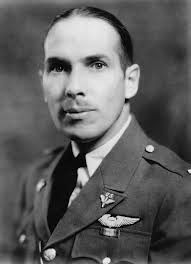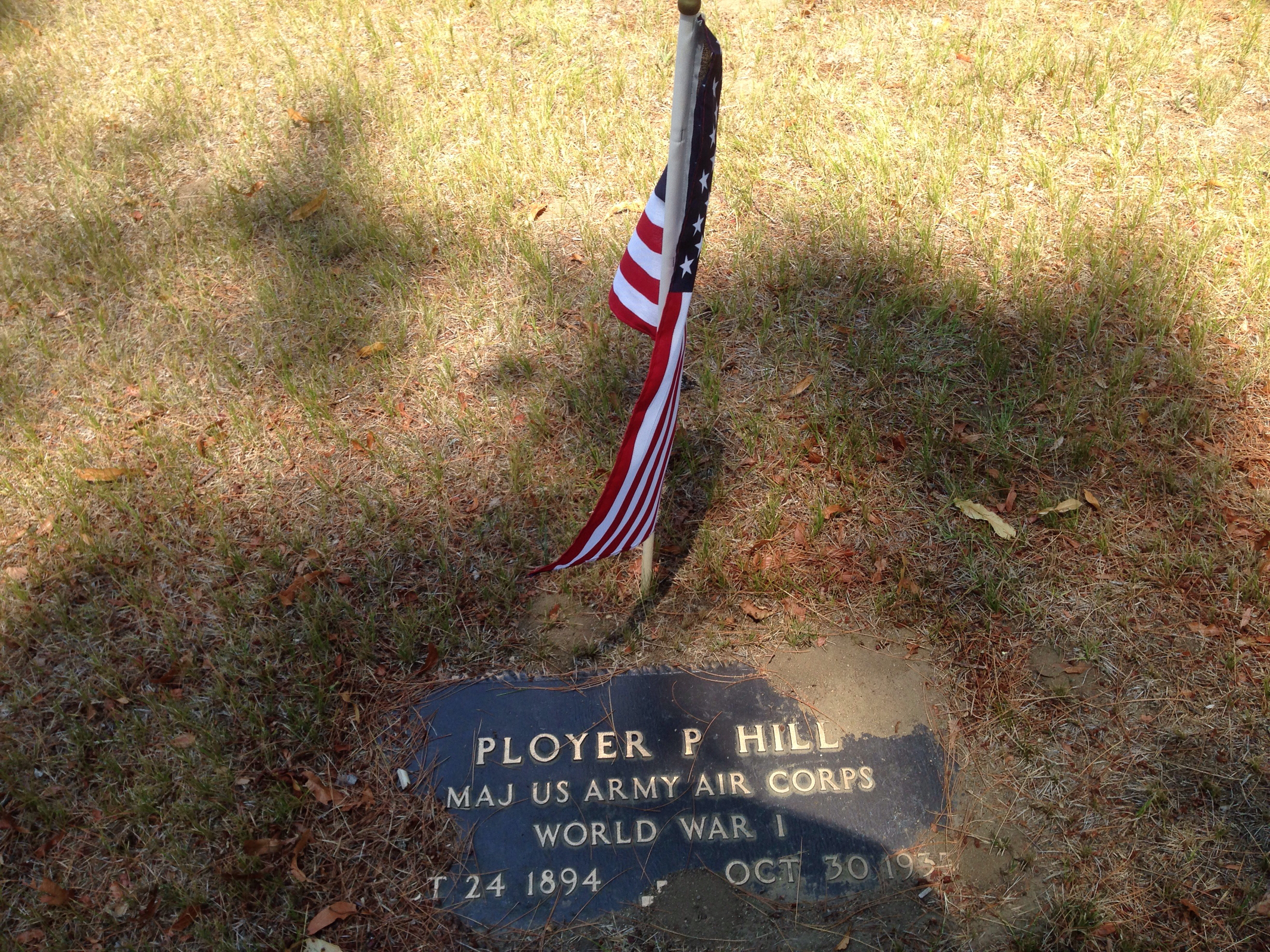Ployer Peter Hill (1894 – 1935), known as "Pete" or "Peter", was a pilot and an officer with a varied career, but is best known for his abilities as a test pilot. In an aviation career that spanned eighteen years, Hill piloted nearly 60 of the Army Air Corps' newest aircraft, testing and evaluating their capabilities for service.
Pete Hill was born in Newburyport, Massachusetts on October 24, 1894 and attended grammar school and high school in his hometown. In 1916, he graduated from Brown University with a Bachelor of Science degree in Civil Engineering.
The following year, he enlisted in the Aviation Section of the U.S. Army Signal Enlisted Reserve Corps. In 1918, he received flight instruction at the School of Military Aeronautics at Cornell University, the Aviation Concentration Camp at Camp Dix in Dallas, Texas, and at Chanute Field in Rantoul, Illinois. Hill then accepted a commission as a 2nd lieutenant in the regular Army and served as a flying instructor before receiving instruction as a bombardment pilot.
In 1919, Hill served in the Office of the Chief of the Air Corps in Washington, D.C., then in 1920 was ordered to duty with the American Army of Occupation in Germany, where he served as the Engineer Officer of the Air Service Flying Station in Weissenthurm. In 1922, he was assigned to duty with the 12th Aero Squadron stationed at Fort Bliss in El Paso, Texas, then transferred back to Chanute Field for instruction in aerial photography. After completing the course, he stayed on as a student instructor.
In 1924, he returned to duty in Washington, D.C., in the Training and War Plans Division under the Chief of the Air Service. In 1925, he was ordered to duty at Mitchel Field, New York, where he was appointed Commanding Officer of the 14th Photo Section, a job he held until 1929. He then served as the Commanding Officer of the 6th Photo Section at Nichols Field in Manila.
In 1932, he returned to the United States and was assigned to Wright Field in Dayton, Ohio, where he served as a test pilot and Assistant Chief of Planes and Engines in the Maintenance Unit. In 1935, he was assigned as the Chief of the Flying Branch of the Material Division at Wright Field, with the temporary rank of Major. His duties involved the flight testing and evaluation of numerous new military aircraft designs at various contractors' plants, including the Consolidated P-30, the Martin B-10 and B-12, and many others.
On October 30, 1935, Ployer Peter Hill died as a result of injuries received from the crash of the Boeing experimental aircraft Model 299 at Wright Field. The crash occurred because the crew neglected to remove the devices intended to keep the control surfaces from moving when the plane was on the ground. This aircraft was the prototype of what would later become the famous B-17 Flying Fortress of World War II. Major Hill was buried in Newburyport, Massachusetts, on November 3, 1935.
In 1939, the U.S. War Department named the site of the Ogden Air Depot "Hill Field" in honor of Major Ployer Peter Hill. In 1948, Hill Field was renamed Hill Air Force Base.
Ployer Peter Hill (1894 – 1935), known as "Pete" or "Peter", was a pilot and an officer with a varied career, but is best known for his abilities as a test pilot. In an aviation career that spanned eighteen years, Hill piloted nearly 60 of the Army Air Corps' newest aircraft, testing and evaluating their capabilities for service.
Pete Hill was born in Newburyport, Massachusetts on October 24, 1894 and attended grammar school and high school in his hometown. In 1916, he graduated from Brown University with a Bachelor of Science degree in Civil Engineering.
The following year, he enlisted in the Aviation Section of the U.S. Army Signal Enlisted Reserve Corps. In 1918, he received flight instruction at the School of Military Aeronautics at Cornell University, the Aviation Concentration Camp at Camp Dix in Dallas, Texas, and at Chanute Field in Rantoul, Illinois. Hill then accepted a commission as a 2nd lieutenant in the regular Army and served as a flying instructor before receiving instruction as a bombardment pilot.
In 1919, Hill served in the Office of the Chief of the Air Corps in Washington, D.C., then in 1920 was ordered to duty with the American Army of Occupation in Germany, where he served as the Engineer Officer of the Air Service Flying Station in Weissenthurm. In 1922, he was assigned to duty with the 12th Aero Squadron stationed at Fort Bliss in El Paso, Texas, then transferred back to Chanute Field for instruction in aerial photography. After completing the course, he stayed on as a student instructor.
In 1924, he returned to duty in Washington, D.C., in the Training and War Plans Division under the Chief of the Air Service. In 1925, he was ordered to duty at Mitchel Field, New York, where he was appointed Commanding Officer of the 14th Photo Section, a job he held until 1929. He then served as the Commanding Officer of the 6th Photo Section at Nichols Field in Manila.
In 1932, he returned to the United States and was assigned to Wright Field in Dayton, Ohio, where he served as a test pilot and Assistant Chief of Planes and Engines in the Maintenance Unit. In 1935, he was assigned as the Chief of the Flying Branch of the Material Division at Wright Field, with the temporary rank of Major. His duties involved the flight testing and evaluation of numerous new military aircraft designs at various contractors' plants, including the Consolidated P-30, the Martin B-10 and B-12, and many others.
On October 30, 1935, Ployer Peter Hill died as a result of injuries received from the crash of the Boeing experimental aircraft Model 299 at Wright Field. The crash occurred because the crew neglected to remove the devices intended to keep the control surfaces from moving when the plane was on the ground. This aircraft was the prototype of what would later become the famous B-17 Flying Fortress of World War II. Major Hill was buried in Newburyport, Massachusetts, on November 3, 1935.
In 1939, the U.S. War Department named the site of the Ogden Air Depot "Hill Field" in honor of Major Ployer Peter Hill. In 1948, Hill Field was renamed Hill Air Force Base.
Family Members
Sponsored by Ancestry
Advertisement
Explore more
Sponsored by Ancestry
Advertisement








